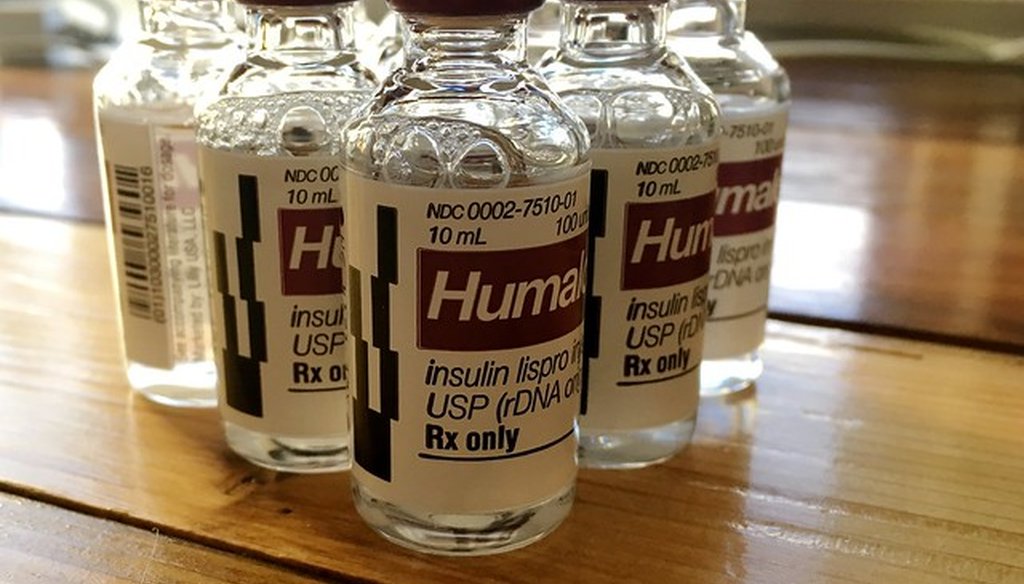



Humalog is one of the more common forms of insulin to manage diabetes. (Alan Levine via Flickr Creative Commons)
When Republican presidential hopefuls debated in Milwaukee in late August, politicians of all stripes were busy spinning.
But a claim from U.S. Rep. Gwen Moore, a Milwaukee Democrat who was touting President Joe Biden’s accomplishments, was truly dizzying.
Moore took the stage in front of a crowded room at No Studios and touted the Biden administration’s passage of the Inflation Reduction Act, which allows Medicare to negotiate prescription drug prices.
Moore said thanks to negotiation of drug prices, "our seniors, instead of paying $500 a month for drugs, are paying no more than 35 cents."
Yes, 35 cents.
That struck us as preposterously low. That would make prescription drugs cheaper than a foam brush for an art project. And the government has only just begun negotiating for lower prices.
Let’s take a look.
We reached Moore’s office to learn where she got that information, and it said she misspoke. Asked what she was referring to, the office cited the cost of insulin which, by one report, had been reduced to $35 per month.
Moore’s office sent us a summary of a report from the U.S. Department of Health and Human Services showing a list of projected savings by state if the cap had been in place in 2020.
According to the department, in 2020, insulin users in Wisconsin would have saved $628 in out-of-pocket costs per enrollee.
The $35 cap on insulin took effect Jan. 1 for Medicare Part D and July 1 for Medicate Part B.
In August, the department revealed 10 drugs selected for price negotiations, which will take place this year and in 2024. Any negotiated prices will become effective in 2026.
Ideally, the negotiations should cause prices to go down for the drugs selected.
Moore’s claim that under the Biden administration prescription drug prices for seniors has fallen to 35 cents.
When asked about the claim, Moore’s office said she misspoke and that she meant to cite the price of insulin being capped at $35 under the Inflation Reduction Act.
We rate the claim False.
State, U.S. Rep. Gwnen Moore, D-Wis., statement, Aug. 23, 2023.
Department of Health and Human Services, Insulin affordability and the Inflation Reduction Act: Medicare beneficiary savings by state and demographics, Jan. 24, 2023
Department of Health and Human Services, New HHS report finds major savings for Americans who use insulin thanks to President Biden’s Inflation Reduction Act, Jan. 24, 2023
Department of Health and Human Services, insulin affordability and the Inflation Reduction Act: Medicare beneficiary savings by state and demographics, Jan. 24, 2023
Department of Health and Human Services, HHS selects the first drugs for Medicare drug price negotiation, Aug. 29, 2023
In a world of wild talk and fake news, help us stand up for the facts.
